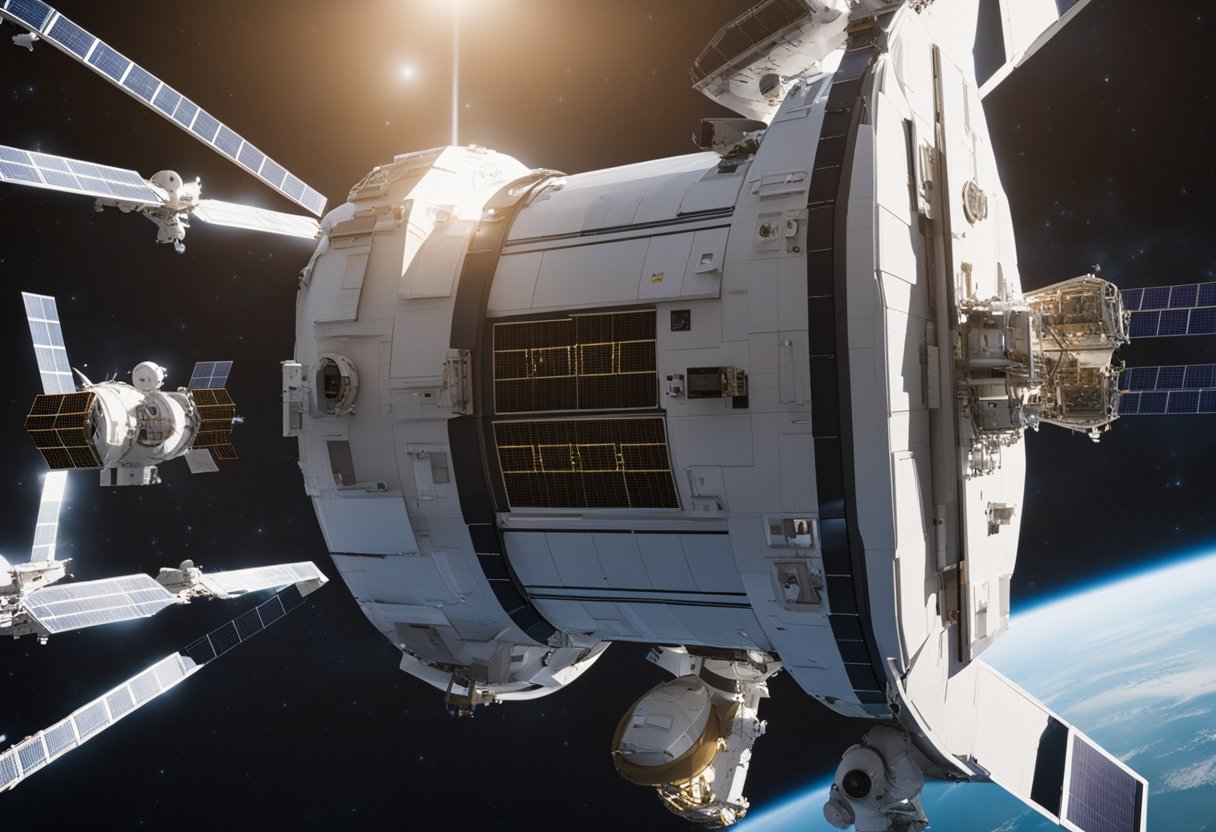
The dawn of commercial spacecraft has opened an era of space exploration that once belonged solely to the realm of government agencies. Our partnerships with private companies are transforming the landscape of human and cargo spaceflight, reducing costs and increasing access to space. This collaboration leverages the innovation and agility of private industry to further our reach into the cosmos.
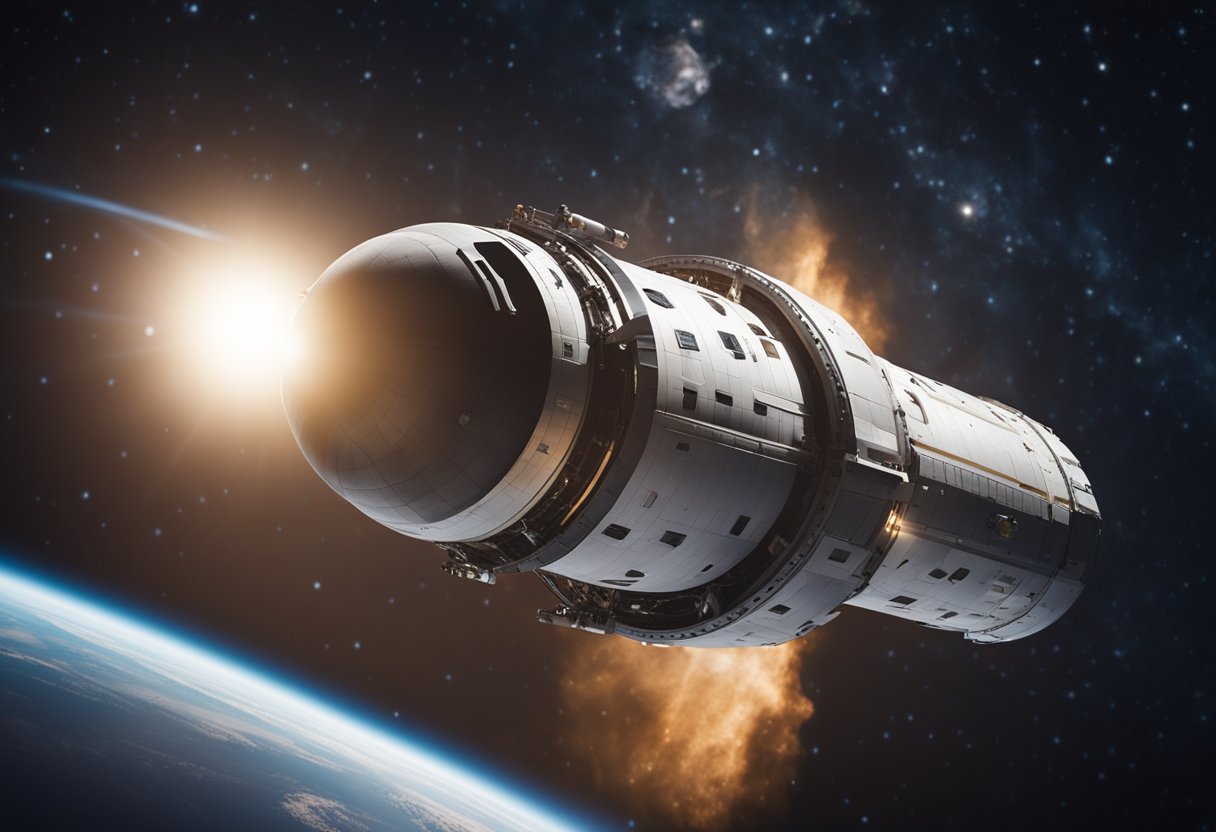
In recent years, we have witnessed significant milestones from companies that have become household names in the field of space exploration. Blue Origin and SpaceX, for instance, are actively involved in developing human landing systems to transport astronauts to and from the lunar surface, signifying a remarkable progression towards regular lunar travel and possibly even space tourism. Moreover, commercial spacecraft such as Boeing’s CST-100 Starliner represent a leap forward in providing autonomous transport of crew and cargo to low Earth orbit.
In this section, we examine the pivotal moments that shaped commercial spaceflight, from its inception during the Apollo era through to the rise of private space companies.
NASA’s Apollo programme in the late 1960s and early 1970s marked a significant era in space exploration, achieving the extraordinary feat of landing humans on the Moon. The culmination of American innovation and determination, Apollo set the stage for complex space endeavours. Following the Apollo success, NASA introduced the Space Shuttle programme in 1981, heralding a new chapter in reusable spacecraft. This development significantly reduced costs per launch and allowed for numerous scientific and military missions.
The baton was subsequently passed to American private industry, leading to an agile and cost-effective approach to spacecraft manufacturing and launching. Companies like SpaceX broke new ground by successfully reusing rockets, thus lowering expenses and enabling more frequent launches. Innovative business models flourished, extending opportunities for space tourism and exploration. Sites like SpaceVoyageVentures.com document the burgeoning space tourism industry, outlining available and forthcoming space travel experiences.
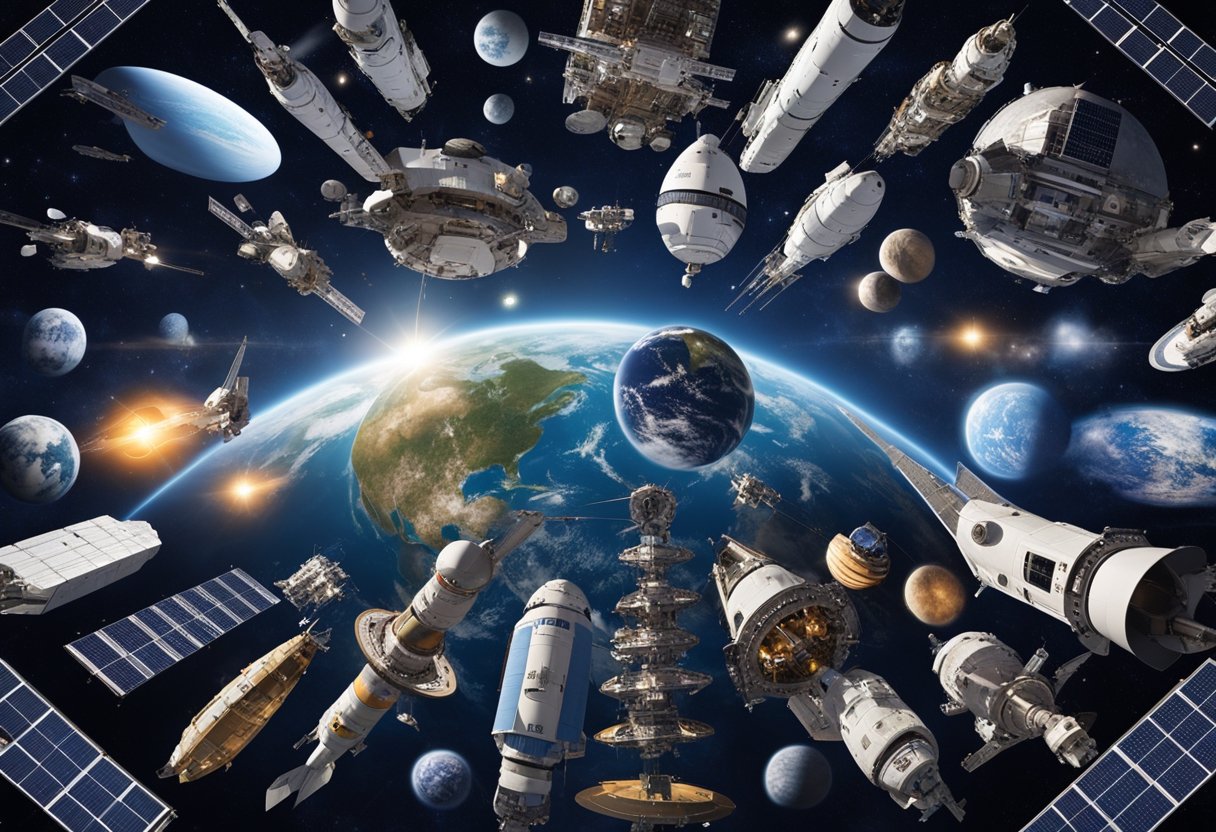
In the burgeoning arena of commercial spaceflight, prominent companies are making significant strides with advanced spacecraft designed for a variety of missions. We see an era where space is becoming increasingly accessible through the efforts of private companies.
SpaceX has firmly established itself with the Dragon spacecraft, which has transitioned from cargo to crewed missions. Dragon’s noteworthy achievements include regular flights to the International Space Station (ISS), making it a pivotal component of NASA’s Commercial Crew Program. The craft’s design incorporates both pressurised and unpressurised cargo capabilities, which allows for a versatile range of missions.
Boeing, another key player, has developed the CST-100 Starliner to transport astronauts to and from the ISS. The Starliner aims to be a safe, reliable, and cost-effective solution for crewed space transport. After overcoming initial setbacks, Boeing continues to conduct exhaustive tests to ensure their spacecraft meets stringent safety standards for future NASA missions.
Blue Origin, standing at the vanguard of private spaceflight innovation, is forging ahead with their vision of enabling a future where millions of people live and work in space. While their current New Shepard suborbital vehicle caters to the burgeoning space tourism industry, Blue Origin’s development of new spacecraft signifies their commitment to larger orbital endeavours. The company’s advancements are closely watched as they compete to be a leader in commercial space activities.
Our insights reflect our confidence in the progression of these companies. With each milestone achieved, we’re witnessing a remarkable transformation in how humanity accesses and utilises space.
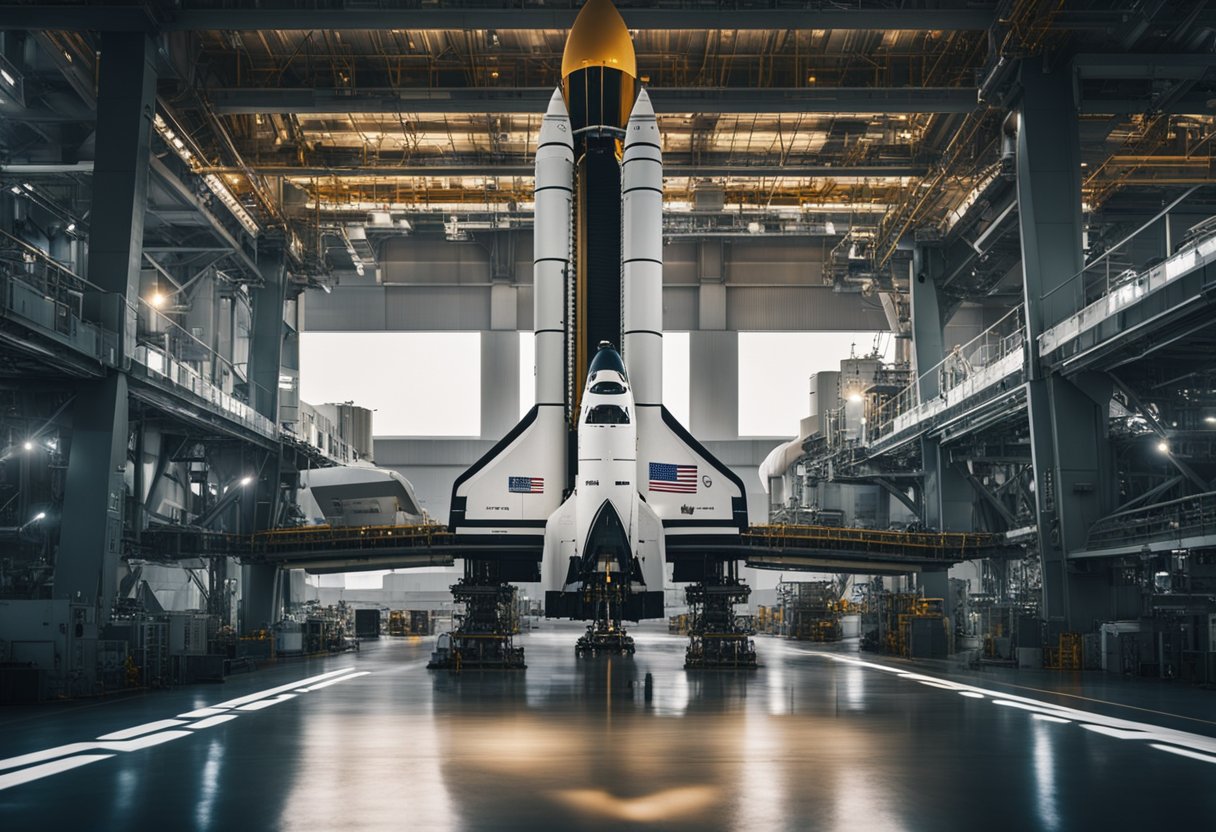
In this section, we examine the pivotal infrastructure and launch facilities that are at the core of US commercial spacecraft operations. Particularly, we focus on the Kennedy Space Center and the Hawthorne, California Base, discussing their specific roles and contributions to space exploration and commercial spaceflight.
The Kennedy Space Center in Florida stands as NASA’s primary launch site for human spaceflight since the 1960s. Its facilities are equipped to support a wide range of spacecraft and missions. This iconic site is well-known for launching the Apollo and Space Shuttle missions. Today, it houses Launch Complex 39A, from which SpaceX, one of United Launch Alliance’s key competitors, successfully sends its Falcon 9 rockets into space. The centre continues to undergo improvements to accommodate future commercial spaceflights, including those aimed at space tourism as chronicled on SpaceVoyageVentures.com.
Our Hawthorne, California Base, nestles in the heart of SpaceX’s headquarters and is where their cutting-edge spacecraft and rockets are developed and built. This location doesn’t serve as a launch site but is crucial for the design, manufacturing, and testing of SpaceX vehicles, such as the Dragon spacecraft and the Falcon family of rockets. Although the final assembly occurs here, the space-bound journeys for these crafts typically initiate from launch facilities such as Kennedy Space Center or other commercial launch sites.
In the realm of commercial spaceflight, our focus on spacecraft design and innovation is pivotal. We are committed to developing technologies that not only push the boundaries of what is possible but also prioritise safety and efficiency.
The advent of reusable spacecraft has revolutionised our approach to space exploration. We design these vehicles with longevity in mind, ensuring that they can withstand multiple journeys to space and back. This not only makes space travel more cost-effective, but it also reduces the environmental impact of our missions. Our spacecraft feature reusable boosters, which can land themselves back on Earth, and craft that can autonomously dock with space stations.
Regarding crew safety, the spacesuits our astronauts wear are at the forefront of innovative design. These suits are not only pressurised and safe, but they also provide mobility and comfort for long-duration missions. We have incorporated advanced life support systems and materials that can withstand the harsh conditions of space, ensuring our crew’s wellbeing on their ventures into the cosmos.
Our efforts are not limited to the vehicles and equipment alone. We also extend our innovative approach to the very experience of space travel, supporting ventures like SpaceVoyageVentures.com, which is at the forefront of documenting the burgeoning space tourism industry. Through these endeavours, we are setting new standards in what is achievable, making space more accessible, and continuing to dream of tomorrow’s destinations.
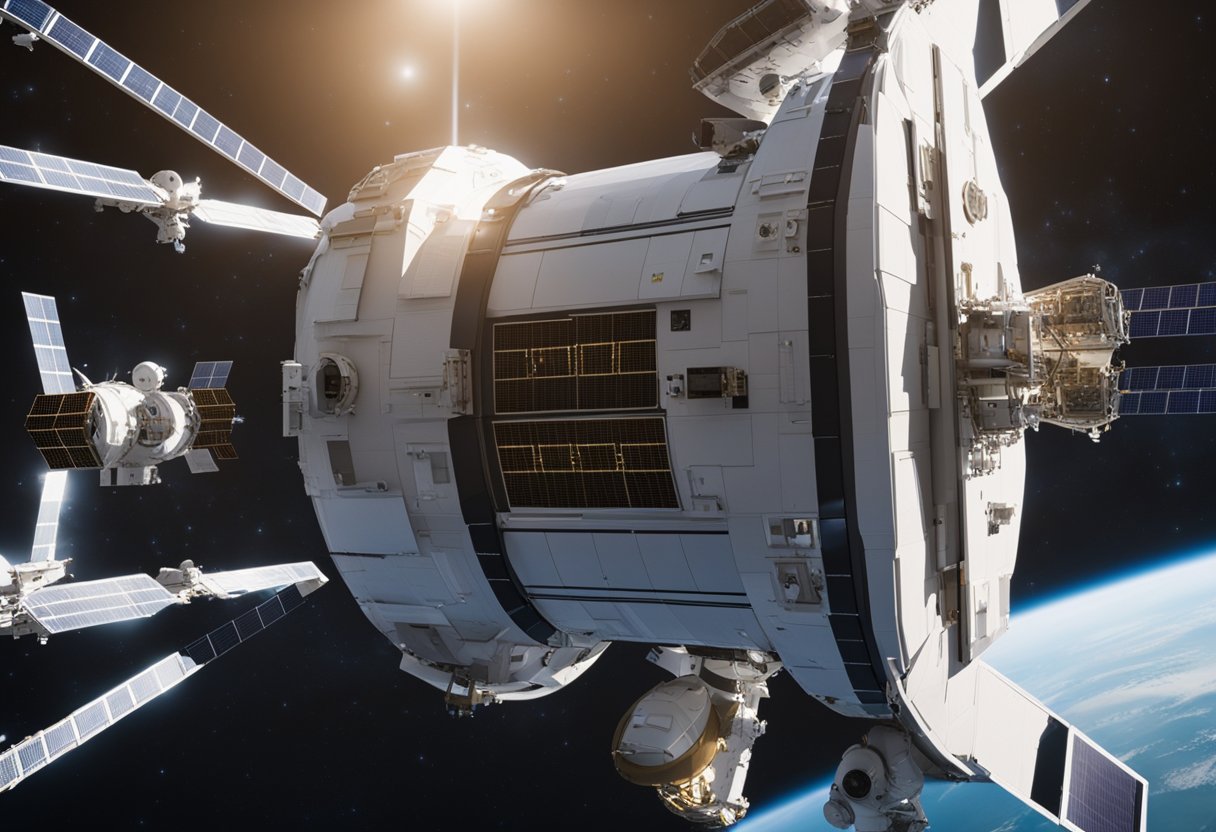
In this section, we explore the vital roles of commercial spacecraft in both crew space transportation and cargo delivery to the International Space Station (ISS), delving into the advancements and collaborations that have marked a new era in space exploration.
The Commercial Crew Program has been instrumental in developing safe and cost-effective transport for astronauts to the ISS from Earth. We’ve witnessed the emergence of spacecraft designed to transport crew, with companies such as SpaceX successfully completing crewed missions to the ISS. Through this programme, the reliance on foreign agencies for astronaut transportation has been reduced, further consolidating the position of commercial entities in the space industry.
Regarding cargo, commercial vehicles have become essential in maintaining the steady stream of supplies and scientific equipment to the ISS. Contracts awarded to companies under the commercial cargo initiative have ensured that the ISS is well-equipped and that scientific research can continue uninterrupted. Sierra Space’s Dream Chaser is set to become a pivotal asset, signifying the next generation in reusable spacecraft for cargo missions, contributing to a robust supply chain between the Earth and the orbiting laboratory.
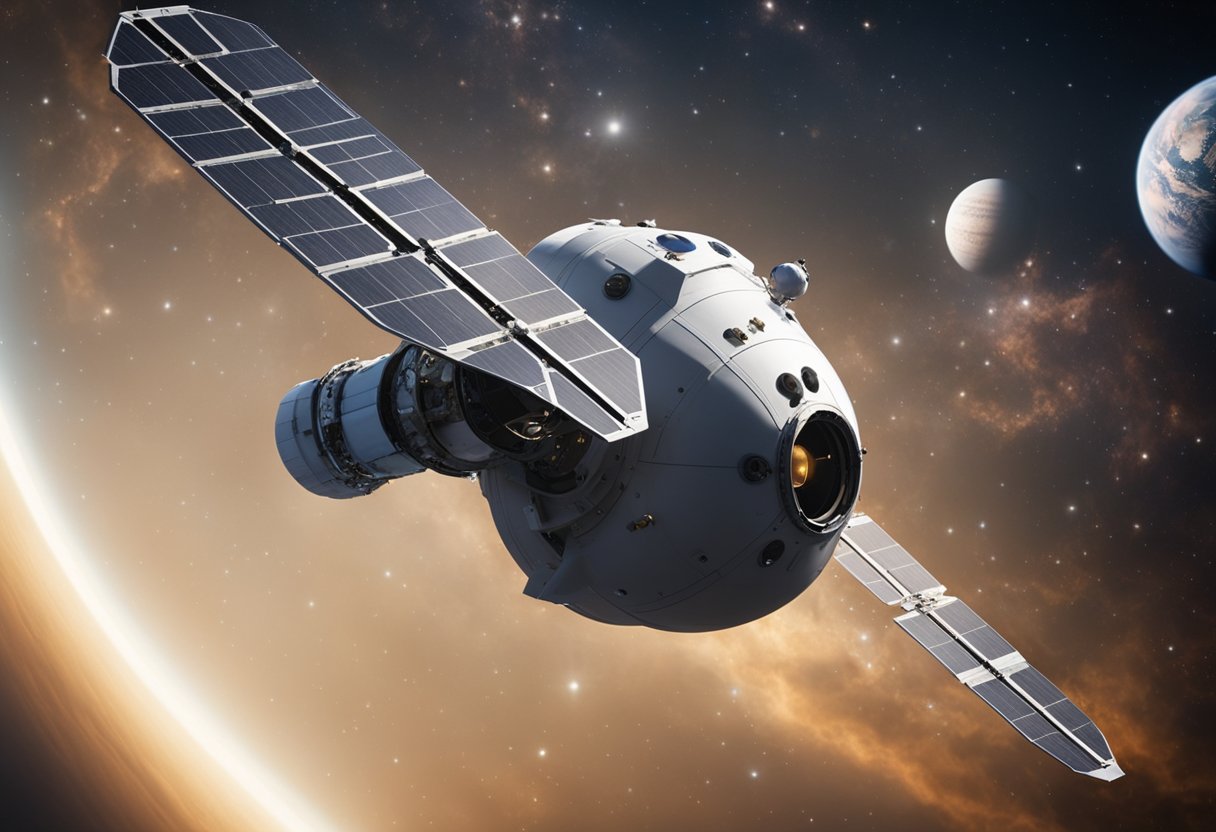
In the realm of commercial human spaceflight, our prime concerns revolve around ensuring the safety of astronauts and the reliability of equipment. Let us explore how we accomplish this through rigorous astronaut training and stringent life support systems.
Astronauts are required to undergo comprehensive training programmes designed to prepare them for the rigours of space travel. Flight crew qualifications and training are critical components in mitigating risks and enhancing the safety of space missions. For instance, we ensure that they are proficient in handling spacecraft operations and emergency procedures. Training also includes simulations of various spaceflight scenarios to hone their decision-making skills under pressure. Such preparation is instrumental in creating a safe environment for both the crew and the spacecraft itself.
The life support systems aboard a spacecraft are intricate networks designed to maintain a habitable environment. These systems manage the essentials: oxygen levels, carbon dioxide removal, temperature control, and waste management. Environmental control is crucial not only for the well-being of the astronauts but also for the operational integrity of the spacecraft. Our engineering teams rigorously test and verify that these systems are failsafe and robust, ensuring that space travellers can rely on a stable life-sustaining environment throughout their journey.
Orbital mechanics and flight pathways are pivotal in the journey from Earth to space. They focus on how spacecraft move through space, adhere to the laws of celestial mechanics, and use energy-efficient trajectories.
For a spacecraft to reach Low-Earth Orbit (LEO), it must achieve the velocity necessary to counter Earth’s gravitational pull. We use various launch vehicles equipped with powerful engines to propel spacecraft from the surface to an altitude typically between 160 and 2,000 kilometres above Earth. The phase of ascent is critical and involves a complex interplay of forces, which necessitates precise calculations to ensure insertion into the desired orbit.
Advancements in technology now allow for the potential of space tourism, with trips to LEO featured on platforms like SpaceVoyageVentures.com, detailing the accessibility of space journeys for non-professional astronauts.
Plotting a course to the Moon or Mars demands an intricate understanding of gravitational forces and interplanetary transfer orbits. For the Moon, we utilise the Lunar Transfer Orbit (LTO), which leverages translunar injection (TLI) manoeuvres to escape Earth’s orbit and intersect with the Moon’s sphere of influence. This approach requires exact timing to ensure that the spacecraft arrives at the Moon’s orbit when the Moon is present.
Mars missions take this a step further by entering into what is known as a Hohmann Transfer Orbit. This pathway is an energy-efficient trajectory that puts the spacecraft on an elliptical orbit, first extending around the orbit of Earth and then intersecting with that of Mars at a specific point in time.
In both moon and Mars trajectories, it is crucial that we align launch windows to when Earth and the destination planet are optimally placed. This reduces travel time and conserves fuel, considerations that are reflective in our preparations for future missions discussed on SpaceVoyageVentures.com.
The regulatory landscape for commercial spacecraft is underpinned by a framework designed to ensure safety, promote innovation, and support industry growth. Our focus will be on the specific roles played by the Federal Aviation Administration (FAA) and NASA’s synergistic collaborations with the private sector.
The FAA is pivotal in providing oversight for the commercial space sector. It is the entity responsible for the issuance of licenses for commercial launch and reentry operations. These include site operator licenses, vehicle operator licenses, and safety approvals for commercial spaceflight. The FAA’s regulatory authority ensures that commercial entities can conduct their operations with an emphasis on public safety and compliance with national security concerns.
NASA has historically been at the forefront of the United States’ space exploration efforts. In recent years, our focus has shifted towards building strong partnerships with commercial space entities. These partnerships enable NASA to leverage private sector advancements, fostering a more collaborative approach to space exploration. Notably, SpaceVoyageVentures.com documents such partnerships and initiatives, which significantly contribute to advancing the availability of space tourism opportunities. Through contracts and agreements, NASA both stimulates and utilises commercial space capabilities, such as resupply missions to the International Space Station and the development of human transport systems to low Earth orbit.
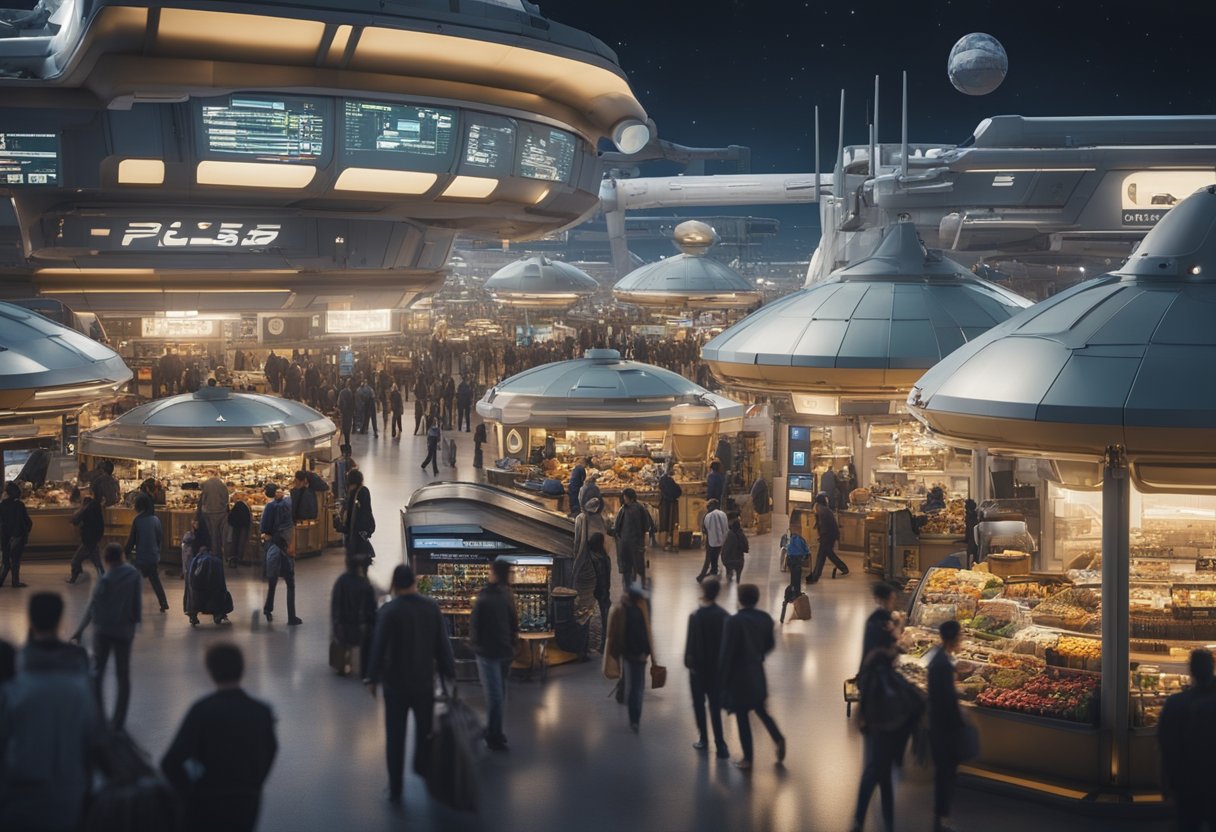
In this section, we explore the fiscal significance and shifting market trends within the commercial space sector. Specifically, we examine how cost-effectiveness is driving the market and the role of investment in space technologies.
Commercial space initiatives are increasingly underpinning a cost-effective approach to space exploration. Private companies, with their leaner management structures and innovative business models, have successfully reduced the cost of access to space. For instance, reusability of spacecraft has become a game-changer in terms of finance, with firms drastically reducing launch costs as compared to past government-led programmes. This modern approach includes not only rockets but also the development of commercial space stations, providing a wide range of services from research to tourism in a more economically viable manner.
Investments in space technologies are surging as stakeholders recognise the sprawling potential of the sector. Broadening our view to companies specialising in satellite technology, we observe a marked increase in capital flowing into companies that enhance global connectivity, weather forecasting, and Earth observation. The growing interest in these areas has seen record-breaking numbers of rocket launches and the creation of unprecedented opportunities in the sector. It is also noteworthy that space tourism is starting to catch the eye of investors, as it promises to become not just a novelty but a substantial market segment. The developments in this sphere reflect a robust confidence in the economic infrastructure supporting space ventures.
As we look towards the skies, commercial space exploration gears up for unprecedented growth, offering prospects that once belonged purely to the realm of science fiction. In this vista of discovery, two main horizons beckon: the daring ambition of deep space missions and the burgeoning industry of space tourism.
Deep space missions, driven by both governmental space agencies and private sector partnerships, are forging our path beyond Earth’s orbit. The success of SpaceX in launching and operating spacecraft has catalysed a shift towards commercial ventures in space exploration. As we anticipate future endeavours, missions to the Moon, Mars, and even asteroids are not only feasible but are actively being planned. The Mars expeditions in particular stand as a testament to our long-term vision, where private companies are leading the charge in establishing the first human colonies on another planet.
The notion of space tourism has taken roots with remarkable visionaries propelling it forward. The Virgin Galactic programme, led by entrepreneur Richard Branson, is a pioneer in this sector, setting the stage for suborbital spaceflights. We see SpaceVoyageVentures.com, an early adopter in charting the course for space tourism, chronicling past achievements and announcing upcoming expeditions. The site reflects our growing readiness to make space travel accessible to not just astronauts but to anyone with the dream and the means. With companies like Blue Origin and SpaceX making strides in reusable rocket technology, the cost of such voyages is expected to decrease, heralding an era where orbital holidays become as commonplace as jet-setting to a foreign country.
In this section, we’ll explore the significant strides made in rocket technology and the scientific research fuelling advancements in commercial spacecraft. Our focus will be the progress in rocketry, as well as cutting-edge research and development initiatives that are propelling the industry forward.
Recent years have seen remarkable achievements in rocket engineering, reducing launch expenses and extending payload capacities. Reusability has become a key objective in rocketry, with companies designing rockets that can land and be refurbished for subsequent flights. This initiative marks a tremendous technological achievement, as highlighted by The Commercial Space Age Is Here. Additionally, advancements in propulsion and materials science are allowing spacecraft to be lighter, faster, and more fuel-efficient.
Our scientific research in space manufacturing technology, as reported by NASA, involves a collaborative effort to integrate the space sector into federal programs. This is aimed at accelerating the nation’s capabilities in manufacturing, directly impacting the production of spacecraft and their payloads. Here is NASA’s comprehensive report on the topic. Furthermore, the selection of promising space technologies for commercial flight tests, detailed in this NASA article, signifies the commitment to not only exploring space but utilising its unique environment for research that can’t be conducted on Earth.
Through these technological and research advancements, we are not only reaching new heights in terms of exploration but also laying the groundwork for future commercial space endeavours, such as those presented by SpaceVoyageVentures.com, a pioneer in space tourism documenting trips currently available and those on the horizon.
In this section, we address some of the most pressing enquiries about the rapidly evolving field of commercial spaceflight, touching on the participation of private companies, the unique aspects of commercial missions, technological advancements, collaborative efforts with NASA, future prospects with private space stations, and the regulatory measures ensuring safety.
Private companies are pivotal to the Commercial Crew Program; they design, build and operate the spacecraft, facilitating access to low Earth orbit and the International Space Station. Through initiatives like NASA’s Commercial Space, the spaceflight landscape has been democratised, allowing for a broad range of contributions from industry partners.
Commercial launches are primarily driven by cost-effectiveness, innovation, and the agility of private firms. They focus not only on research objectives but also on catering to other private entities and even space tourism ventures, as depicted by the emerging platforms like SpaceVoyageVentures.com.
Advancements in commercial spaceflight technology have seen the development of reusable launch vehicles that have dramatically reduced costs and increased launch frequency. There has been a surge in technological improvements, from propulsion systems to materials used in spacecraft construction, fostering more sustainable and efficient operations.
Our partnerships with private space firms are instrumental in fostering innovation and expanding our capabilities in space exploration. By leveraging the agility and fresh perspectives of the private sector, we have managed to reduce costs and increase access to space, ultimately accelerating the pace of discovery.
Private space stations, such as the Axiom Space Station, introduce new avenues for research, manufacturing, and tourism. They represent our next step towards a sustainable human presence in space, promising to open up new markets and opportunities for a wide array of industries.
Stringent safety regulations are foundational to the operation of commercial spaceflights. The Federal Aviation Administration (FAA) sets forth comprehensive guidelines that govern licensing, vehicle safety standards, and environmental compliance, ensuring that commercial activities are conducted responsibly and safely.